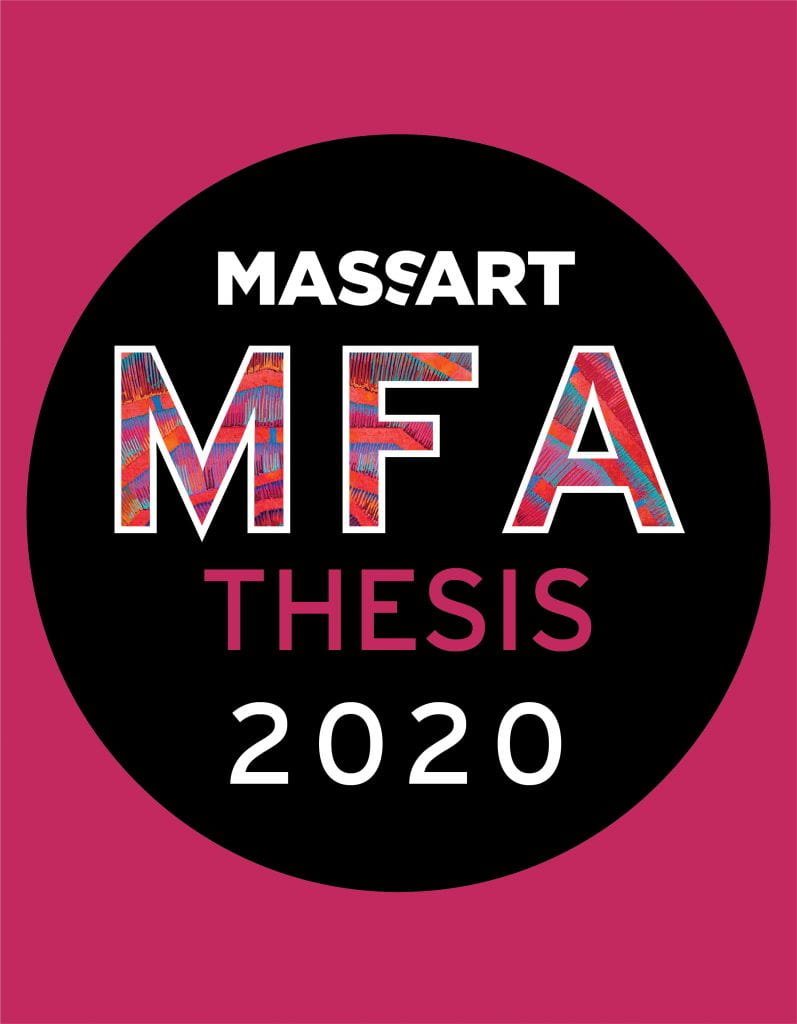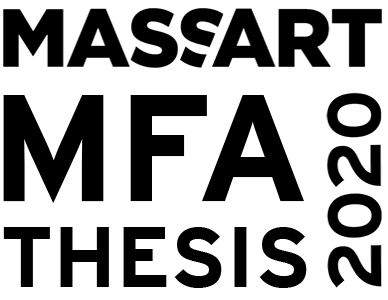Curated by Lisa Tung, Executive Director of the MassArt Art Museum (MAAM), the 2020 Virtual MFA Thesis Exhibition is on view May 19 – June 18
This exhibition was digitally prepared by Rebecca Morrison and Felicia Deneane Scott of the MassArt Graduate Programs.
Preview the exhibition here, or view live/full screen on Kunstmatrix.

We cannot see everything at once. Instead, we perceive, recall, and describe the world as landscapes. We not only see the world through the frame of landscape but create and even escape to them in our minds. When we reshape the physical world to make it more pleasing by altering or adding, we call it “landscaping.” The artists in this year’s Masters of Fine Arts Thesis exhibition, whether by widening or narrowing, looking inward or looking outward, projecting or remembering, all portray the world and the experience of being human in ways that show the breadth and power of landscapes.
Huiquan Jiang and Neetu Singhal both examine a universal spiritual realm through their large-scale paintings. Singhal is determined in her obsessive and thorough pursuit of color and abstraction, creating infinite circular impressions in which viewers can lose themselves. Jiang blends religious philosophies and societal concerns to create a map and an environment for healing.
Nate Heilman and Zhidong Zhang mine their autobiographies to create personal topographies of war and passion. Heilman channels memories and relics from combat to articulate and remember war stories. Zhang challenges gender roles and definitions of sexuality in a photographic essay constructing scenes of fantasy, fetish, and desire.
Deftly tapping into Western and Asian art history respectively, Halie Smith and Li Wang depict contemporary landscapes based on the traditional. Smith’s paintings are a social commentary focused on labor and class, while Wang’s drawings and canvases are a navigation and juxtaposition of the artist’s existence in two opposing countries and cultures.
Harlan Crichton and Jen Mawson focus on the human imprint on the terrain. In Crichton’s disquieting color photographs, something is amiss. Using flares and pyrotechnics, Crichton constructs a set, in which humans impose on the natural world and render it unsafe. Mawson explores our abandoned neighborhoods and forgotten towns. Hers is a narrative of loss, flight, and economic decline.
Finally, Tara Hayes and Hung Ju Kan portray mental spaces. For Hayes, it is a physical and playful overlapping of real, altered, and fictional lands. For Kan, it is a mapping of memories brought to life by flower-patterned fabric combined with emotions and impressions of a new place.
– Lisa Tung
Executive director, MassArt Art Museum
May 2020
